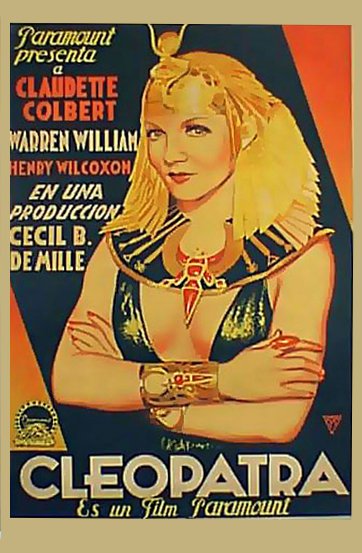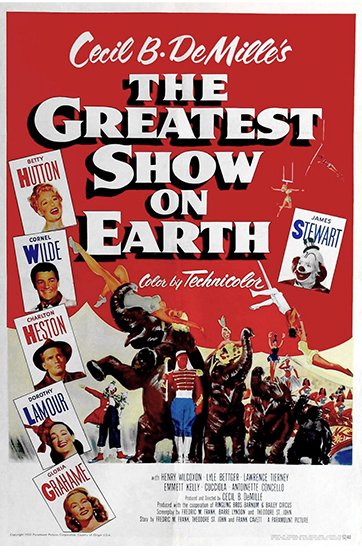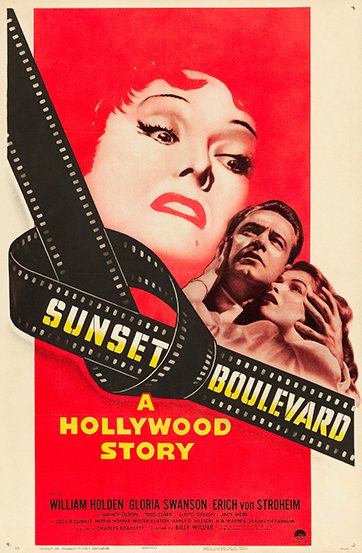DeMille and the Silver Screen
The story of the silver screen is an epic tale of a medium that started with simple, silent, and black-and-white films and evolved into a multi-billion dollar industry producing modern-day blockbusters. One of the pioneers of this industry was the American filmmaker, Cecil B. DeMille, who was instrumental in the development of Hollywood’s golden era.




DeMille made his name with epic films such as “The Ten Commandments” and “Cleopatra,” which showcased his mastery of big-screen spectacle. His work significantly influenced the development of the silver screen, as he was always exploring new and innovative ways of using the medium.
DeMille’s legacy continues to inspire filmmakers today, and his work stands as a testament to the enduring power of the silver screen. The film industry has seen many challenges over the years, from financial difficulties to censorship controversies, but it remains a vital part of popular culture and continues to touch the lives of millions of people worldwide. As the industry evolves, Mr. DeMille’s impact will continue to be felt, and future generations of filmmakers will continue to build on his legacy, creating new and exciting stories for the silver screen.
The silver screen, or cinemas, have come into existence in 1895 with the Lumiere Brothers’ first public film screening in Paris. This led to the emergence of film as a popular medium of entertainment that has continued to evolve over the years. The early cinema primarily focused on short documentaries and silent films, but sound and color were introduced in the 1920s and 1930s.
Over time, the film industry grew to become a global phenomenon that has produced countless classic movies, actors, and directors. In recent years, advances in technology have transformed the medium, and streaming services have disrupted traditional models of film production and distribution.
Early Life and Career of Cecil B DeMille
Cecil B DeMille is a name that is synonymous with the golden age of Hollywood. As one of the most successful and influential filmmakers of the 20th century, DeMille was responsible for creating some of the most spectacular and memorable films of his time. From his early career in theater to his founding of the Jesse L. Lasky Feature Play Company and the Academy of Motion Picture Arts and Sciences, DeMille left an indelible mark on the film industry that is still felt today. In this profile, we will explore the life, career, and legacy of this Hollywood icon, examining his contributions to the art of filmmaking and his enduring impact on American culture
Family Background and Education
Cecil B DeMille was born on August 12, 1881, in Ashfield, Massachusetts. He came from a prominent theatrical family, with his father being a playwright and his mother an actress. DeMille attended the Pennsylvania Military College but dropped out after a year to pursue his love of theater.
Early Career in Theater and Film
DeMille began his career in theater as an actor and later as a playwright. He gained critical acclaim for his play The Warrens of Virginia, which was produced on Broadway in 1907. In 1913, he made his directorial debut with the film The Squaw Man, which was a critical and commercial success.
Founding of Jesse L. Lasky Feature Play Company
In 1913, DeMille joined forces with Samuel Goldwyn, Jesse L. Lasky, and others to found the Jesse L. Lasky Feature Play Company, which later became Paramount Pictures. DeMille directed and produced many films for the company, including The Ten Commandments, which he would later remake as a Technicolor epic.
Making of The Ten Commandments
Background and Overview of the Film
The Ten Commandments was a remake of DeMille’s 1923 silent film of the same name. The film starred Charlton Heston as Moses and Yul Brynner as Pharaoh Ramses. The film followed the story of the Exodus out of Egypt and the receiving of the Ten Commandments.
Challenges and Controversies during Filming
The making of The Ten Commandments was not without its challenges. The film was shot on location in the Sinai desert, which presented its own set of challenges. The parting of the Red Sea scene was one of the most challenging scenes to produce, and it required the use of a massive water tank for the special effects. The film also faced controversy over its portrayal of race and ethnicity.
Reception and Impact of The Ten Commandments
The Ten Commandments was a commercial and critical success, grossing over $80 million worldwide. It was one of the highest-grossing films of its time and helped establish DeMille as a master of the epic film genre. The film’s impact can still be seen in modern-day blockbusters, and it remains a beloved classic of Hollywood’s Golden Age.
Impact of DeMille’s Films on Hollywood
Influence on Film Production and Technology
DeMille’s films had a major impact on Hollywood, particularly in the areas of film production and technology. He was known for his lavish sets and intricate costumes, which set the standard for Hollywood glamour. DeMille also helped advance the use of Technicolor, which he used to great effect in The Ten Commandments.
Legacy of DeMille’s Spectacular Epics
DeMille’s films were known for their grandeur and spectacle, and he helped set the standard for epic filmmaking. His films influenced generations of filmmakers and continue to be celebrated for their artistic and technical achievements.
DeMille’s Role in Propaganda Films during World War II
During World War II, DeMille played a key role in producing propaganda films for the US government. He produced films that supported the war effort and helped rally the American people behind the cause.
Criticism and Controversy Surrounding DeMille’s Works
Portrayal of Women and Minorities in DeMille’s Films
DeMille’s films have faced criticism for their portrayal of women and minorities. His films often reinforced traditional gender roles and social hierarchies, which have been criticized by scholars and activists.
Reception of DeMille’s Religious and Biblical Epics
DeMille’s religious and biblical epics have also faced criticism for their interpretations of scripture and their portrayal of religious figures. Some have accused DeMille of promoting a conservative Christian agenda through his films.
DeMille’s Political Beliefs and their Reflections in his Films
DeMille was known for his conservative political beliefs, which were often reflected in his films. Some have criticized his films for promoting a conservative and elitist worldview that reinforced existing power structures.Touchstones of Hollywood
Continuing Inspiration for Filmmakers and Audiences Alike
DeMille’s Enduring Legacy in the Modern Film Industry
DeMille’s Contributions to the Film Industry
Innovations in Film Production and Direction
Cecil B. DeMille was a pioneer in the film industry, renowned for his innovative approach to filmmaking. He was one of the first directors to use special effects, creating elaborate sets and employing a large number of extras for his films. His movies often featured complex, multi-camera shots and intricate lighting techniques, which became a signature of his style.
Founding of the Academy of Motion Picture Arts and Sciences
DeMille helped found the Academy of Motion Picture Arts and Sciences in 1927, which is still responsible for awarding the Oscars to this day. He also served as the first president of the organization, and helped establish several of the Academy’s initiatives, including the creation of the Motion Picture Relief Fund.
DeMille’s Mentorship and Influence on Future Filmmakers
DeMille was not only a prolific director in his own right, but also a mentor and inspiration to many future filmmakers. One of his most famous proteges was the legendary director, Frank Capra, who often cited DeMille as a key influence on his career. Other notable filmmakers who were inspired by DeMille’s work include Stanley Kubrick, Steven Spielberg, and George Lucas.
Personal Life and Legacy of Cecil B DeMille
Marriage and Family Life
DeMille was married to his wife Constance for over 50 years until his death in 1959. They had one child together, a daughter named Cecilia. Despite his busy career, DeMille was known for being a devoted family man and often included his wife and daughter in his film projects.
DeMille’s Philanthropy and Community Involvement
In addition to his contributions to the film industry, DeMille was also a dedicated philanthropist and community leader. He was involved with several charitable organizations throughout his life, and helped raise funds for causes ranging from relief efforts during World War II to the construction of a new hospital in Beverly Hills.
DeMille’s Lasting Impact on American Culture
DeMille’s impact on American culture cannot be overstated. He was one of the most influential directors of the early 20th century, creating films that shaped the way we think about history, religion, and social issues. His legacy lives on today through his films, which continue to be studied and appreciated by audiences all over the world.
Analysis of DeMille’s Directing Style
Use of Spectacle and Grandeur in DeMille’s Films
DeMille was known for his use of spectacle and grandeur in his films, often creating elaborate set pieces and employing a large number of extras to bring his visions to life. He was also known for his attention to detail, spending countless hours perfecting the intricate lighting and camera work that were hallmarks of his style.
Exploration of DeMille’s Character Development and Themes
Despite his focus on spectacle, DeMille was also a master at character development, exploring complex themes such as power, morality, and redemption through his films. He often used religious and historical themes to explore these ideas, creating films that were both visually stunning and intellectually engaging.
DeMille’s Collaborations with Actors and Crew Members
DeMille was a collaborative filmmaker, working closely with his cast and crew to create the best possible final product. He was known for fostering a positive, creative atmosphere on set, and was respected by his colleagues for his professionalism and dedication to his craft.
The Lasting Influence of Cecil B DeMille on American Cinema
DeMille’s Films as Cultural Touchstones of Hollywood
DeMille’s films continue to be regarded as cultural touchstones of Hollywood, embodying the glamour and grandeur of the Golden Age of cinema. His movies, such as “The Ten Commandments” and “Cleopatra,” have become iconic representations of Hollywood’s peak era.
Continuing Inspiration for Filmmakers and Audiences Alike
DeMille’s work has continued to inspire filmmakers and audiences alike, with many modern directors citing him as a major influence on their work. His commitment to spectacle and grandeur, as well as his focus on complex themes, have helped shape the film industry as we know it today.
DeMille’s Enduring Legacy in the Modern Film Industry
DeMille’s legacy lives on today, with his films continuing to be studied and celebrated by film buffs and scholars around the world. His contributions to the film industry paved the way for future generations of filmmakers, and his influence can still be felt in the movies we watch today.Cecil B DeMille’s influence on Hollywood and the film industry cannot be overstated. Through his groundbreaking work in film production and technology, his epic storytelling, and his larger-than-life personality, DeMille established himself as a true icon of American cinema. As we continue to celebrate and appreciate his contributions to the art of filmmaking, we can also recognize the enduring impact that he has had on generations of filmmakers and moviegoers alike.
FAQ:
What are some of Cecil B DeMille’s most famous films?
Some of DeMille’s most famous works include “The Ten Commandments,” “Cleopatra,” “Samson and Delilah,” and “The Greatest Show on Earth.”
What was DeMille’s directing style like?
DeMille was known for his use of spectacle and grandeur in his films, as well as his exploration of themes such as morality, religion, and politics. He was also known for his meticulous attention to detail and his collaborations with actors and crew members.
What was DeMille’s legacy on American cinema?
DeMille’s legacy on American cinema is vast and enduring. He was instrumental in developing many of the techniques and technologies that are still used in filmmaking today, and his influence on the film industry can be seen in the work of countless filmmakers and movies. Additionally, his films remain a beloved part of American culture and continue to be watched and enjoyed by audiences around the world.
What kind of criticism did DeMille’s works receive?
DeMille’s works were often criticized for their portrayal of women and minorities, as well as their religious and political themes. Some critics also felt that his films were overly focused on spectacle and lacked substance. However, despite these criticisms, DeMille’s impact on the film industry and American culture as a whole cannot be denied.
